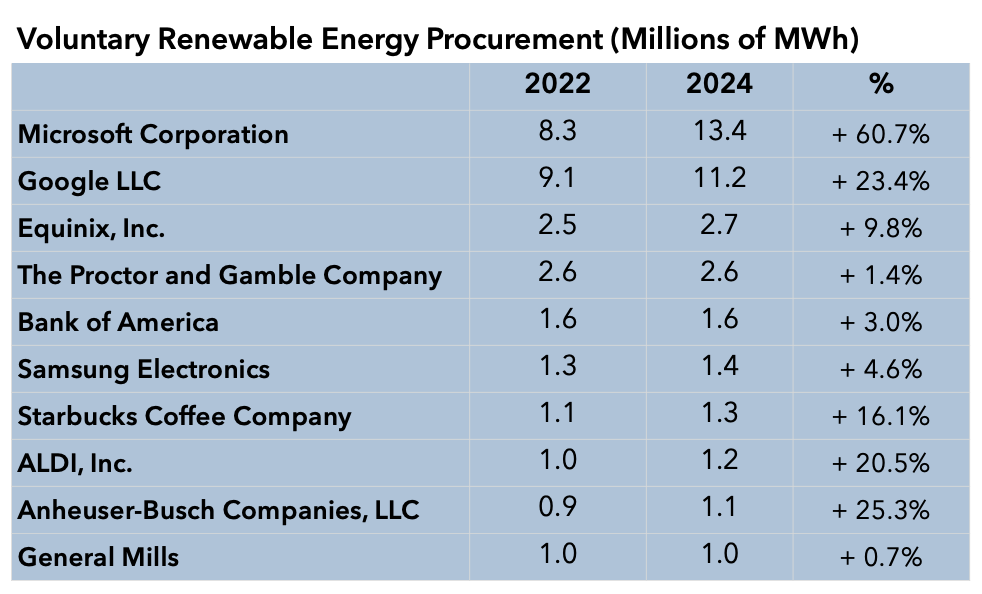Why U.S. Companies Rely on Voluntary RECs in 2025
June 9, 2025
U.S. energy demand is surging due to three key drivers: the rapid growth of AI infrastructure, widespread electrification, and overall economic expansion. Residential electricity prices have jumped 13% since 2022, outpacing inflation. Meanwhile, the cost of building gas-fired power plants has nearly tripled, climbing from ~$785/kW to ~$2,400/kW, with lead times for new turbines now exceeding five years.
As demand for clean energy surges, so does the complexity of accessing it. At Innovo, we provide the digital rails that power the REC market, streamlining how companies source, buy, and retire Renewable Energy Certificates.
What challenges does this energy environment create?
The current energy landscape presents three major challenges:
- Rising and volatile power costs
- Delays and high costs in grid infrastructure buildouts
- Rapidly increasing electricity consumption across all sectors.
These constraints are creating urgency for flexible, scalable clean energy solutions that don’t depend on long-term construction timelines or regulatory hurdles.
AI and cloud computing are heavily impacting electricity demand, especially corporate electricity use. For example, Microsoft’s total emissions rose 23.4% in FY24 due to AI demand alone.
How do Renewable Energy Certificates (RECs) fit into this?
Voluntary Renewable Energy Certificates (RECs) have emerged as one of the most cost-effective and scalable clean energy instruments for U.S. companies. In the case of Microsoft, they wee still able cut Scope 2 emissions by 30% since 2020 despite an increase in electricity usage, largely by scaling REC purchases. Other industries, including banking and hospitality, are following this path. RECs allow corporates to meet Scope 2 emissions goals and hedge against rising utility prices without waiting for new infrastructure or Power Purchase Agreements (PPAs).
Companies' REC purchases are rising in tandem with energy demand. From 2022 to 2024, major companies across tech, finance, and retail sectors increased their renewable electricity usage and voluntary REC retirements. This trend shows that RECs are becoming a mainstream tool for managing emissions and securing clean energy at scale.

What strategic role do RECs play for U.S. businesses?
Corporations are using RECs to manage energy risk, meet compliance obligations, and accelerate sustainability efforts. As Scope 2 emissions become a greater focus, RECs offer an immediate and credible path to clean energy claims, helping companies stay ahead of carbon reporting mandates and investor expectations.
Why are RECs becoming more popular in 2025?
RECs offer five core advantages:
-
Cost-effective: Unbundled RECs are an affordable way of claiming clean energy
-
Flexible: Purchase volumes can scale with energy demand.
-
Fast: RECs avoid delays tied to construction, permitting, or PPAs
-
Stable: They help mitigate volatility from AI-driven grid stress.
-
Credible: RECs are recognized instruments for Scope 2 emissions accounting
What’s the bottom line on voluntary RECs?
REC demand is accelerating because it matches today’s energy reality: demand is rising, costs are volatile, and companies need flexible, verifiable clean energy now. Voluntary RECs offer a scalable, credible, and cost-effective strategy for any company, whether its for optimizing AI workloads or pursuing long-term ESG goals.
Whether you're a buyer or seller of Renewable Energy Certificates, Innovo simplifies every step, from sourcing and settlement to retirement and reporting. Our digital infrastructure removes friction, reduces cost, and speeds up access to verified clean energy. Let’s build a more transparent and efficient REC market together.